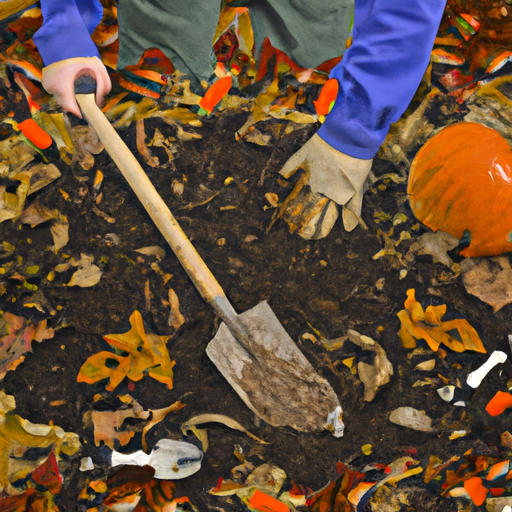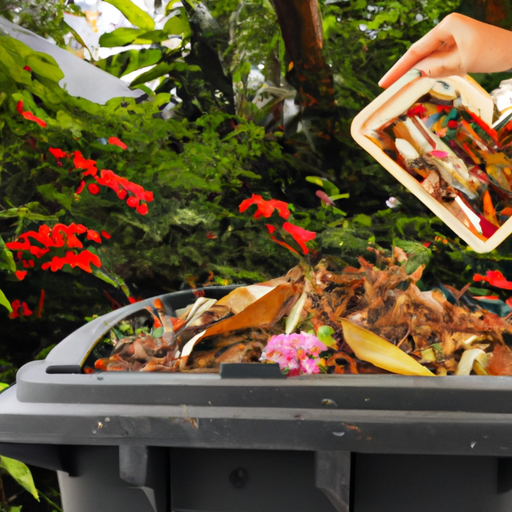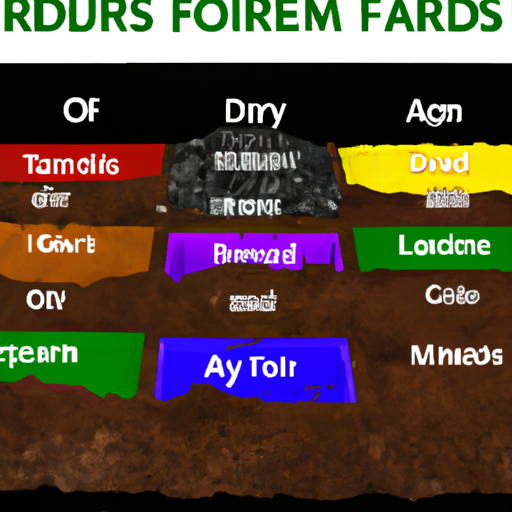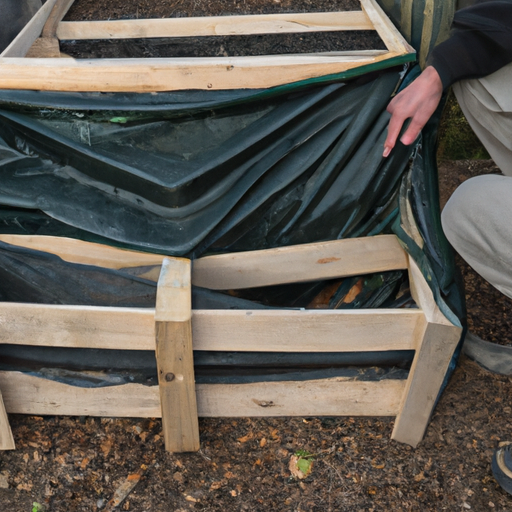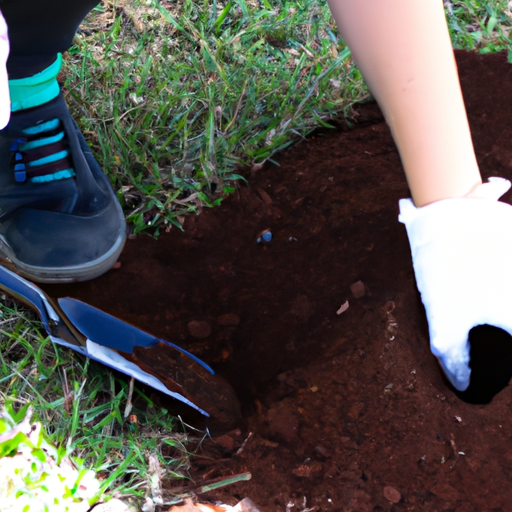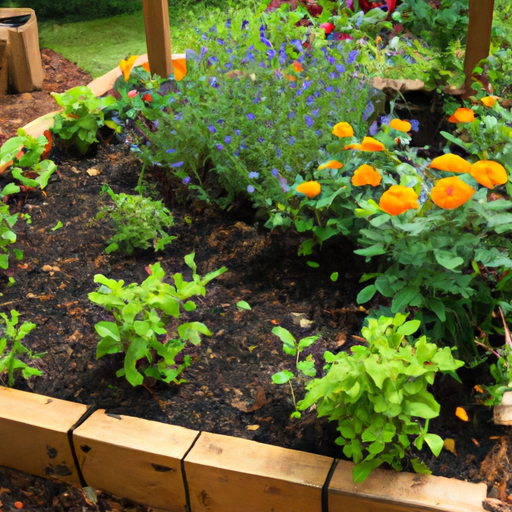As a Master Gardener, I know firsthand the importance of soil preparation for a successful harvest. Fall is an ideal time to start preparing your garden beds for next year’s crops, as it allows ample time for nutrients and amendments to fully integrate into the soil before planting season begins.
The key to fall garden soil preparation is focusing on building healthy soil that can support plant growth throughout the growing season. This involves adding organic matter, such as compost or aged manure, to improve soil structure and fertility.
Additionally, testing your soil pH levels and adjusting accordingly can ensure optimal nutrient availability for plants. With these tips in mind, you’ll be well on your way to a bountiful harvest come springtime.
Understanding The Importance Of Soil Preparation
As a Master Gardener, it’s important to understand the significance of soil preparation before planting your fall garden.
By incorporating beneficial practices such as composting and crop rotation, you can improve your soil quality and achieve better yields.
Benefits of composting include adding organic matter that helps retain moisture in the soil, improves drainage, provides essential nutrients for plant growth, and promotes healthy microorganisms.
Crop rotation is equally vital because it prevents nutrient depletion caused by continuous planting of the same crops year after year.
Rotating crops also helps control pests and diseases naturally while promoting soil health.
Remember that a successful garden starts with proper soil preparation!
Building Healthy Soil For Optimal Plant Growth
Understanding the importance of soil preparation is just the first step towards achieving a bountiful fall harvest. Building healthy soil for optimal plant growth requires more than just tilling and adding fertilizer. It involves using composting techniques to create nutrient-rich soil that nurtures your plants from seedling to maturity, promoting robust root systems and disease resistance.
As a Master Gardener, I can attest that nutrient cycling strategies are essential in building up healthy soils that will yield bumper crops. Here are three tried-and-tested practices:
1. Integrate cover crops into your garden beds: Cover crops offer several benefits such as suppressing weeds, reducing erosion, fixing nitrogen levels in your soil and improving water retention.
2. Make use of crop rotation: Crop rotation entails planting different vegetable families in different areas each year to reduce pest and disease pressure while allowing time for the soil to rebuild its nutrients naturally.
3. Use organic matter: Incorporating organic matter like leaves, grass clippings or food scraps helps improve soil structure by increasing air spaces within the soil profile, which allows roots easier access to oxygen and water.
By following these simple yet effective methods, you’ll be well on your way to creating fertile ground that yields abundant produce season after season without relying on chemical fertilizers or pesticides. Instead, let nature do the work with nutrient cycling strategies!
Adding Organic Matter For Improved Soil Structure And Fertility
To further improve your soil structure and fertility, consider adding organic matter to your fall garden. Organic soil amendments such as composting benefits the health of your plants by providing nutrients, increasing water retention capacity, improving drainage, and promoting beneficial microorganisms. Composting is a great way to create your own organic matter by recycling yard waste and kitchen scraps into nutrient-rich compost that can be used in your garden beds or mixed into potting soil. Another option is incorporating aged manure from herbivorous animals like cows, horses, or rabbits which also adds valuable nitrogen content to the soil. When choosing organic matter for your garden beds, make sure it’s well-aged and has been thoroughly decomposed to avoid introducing any harmful pathogens or weed seeds. By regularly amending with organic matter, you’ll see improved plant growth, healthier root systems, and an overall boost in productivity throughout the growing season. So why not start now? With just a little effort and some patience while waiting for decomposition to occur naturally over time (or through active methods such as turning), you can reap the rewards of having healthy soil ready for planting next spring!
Testing And Adjusting Soil Ph Levels
Now that we have added organic matter to our soil, it is time to test and adjust the pH levels for optimal plant growth.
Soil testing methods are essential in determining what adjustments need to be made.
You can purchase a home testing kit or send a sample to a lab for more accurate results.
The ideal pH range for most vegetables is between 6.0-7.0.
If your soil’s pH falls outside of this range, you can use lime to raise the pH or sulfur to lower it.
It is important not to overdo it with these amendments as too much can harm your plants.
Start by following the package instructions and retest after a few weeks before making any additional adjustments.
By taking the time to test and adjust your soil’s pH levels, you will set yourself up for a successful fall harvest season.
Maximizing Your Harvest Potential
As gardeners, we all want to maximize our harvest potential.
One way to do so is through companion planting. By pairing certain plants together, you can increase their yield and deter pests naturally.
For example, planting basil next to tomatoes not only adds a delicious flavor combo but also repels tomato hornworms.
Another technique for increasing yields is crop rotation. This involves switching up the location of your crops each year to prevent soil-borne diseases and pests from building up in one area.
As Master Gardeners, we know that taking these extra steps can lead to a bountiful fall harvest.
So let’s get creative with our planting arrangements and strategic with our crop rotations for the best possible results!
Frequently Asked Questions
What Are Some Common Mistakes Gardeners Make When Preparing Soil For Fall Planting?
When preparing soil for planting, many gardeners make common mistakes that can negatively impact their yield.
One of the most significant errors is failing to take advantage of composting benefits. Composting helps enrich soil with essential nutrients and organic matter by breaking down plant waste into a nutrient-rich material that plants need to thrive.
Additionally, neglecting cover crops advantages such as reducing erosion and suppressing weeds can lead to poor soil quality over time.
As a Master Gardener, it’s crucial to understand the importance of proper soil preparation techniques like these to achieve your best harvest yet.
Is It Necessary To Remove All Weeds And Debris From The Garden Bed Before Adding Organic Matter?
When preparing a garden bed, it’s important to ensure that the soil is free from weeds and debris.
However, using weed suppressants can be an effective way of controlling weeds while also adding organic matter to the soil.
Additionally, composting weeds can also provide valuable nutrients for your plants.
Remember that healthy soil is the foundation of a successful garden, so taking the time to properly prepare your soil will pay off in the long run.
Can Adding Too Much Fertilizer To The Soil Be Harmful To Plants?
While many gardeners believe that adding more fertilizer to their soil will help their plants grow better, it’s important to note the potential effects of over fertilization.
Using too much synthetic fertilizer can lead to nutrient imbalances and even damage or kill your plants.
Organic fertilizers, on the other hand, release nutrients slowly and are less likely to harm your plants if you accidentally use too much.
When preparing your fall garden bed, consider using organic fertilizers instead of synthetic ones and follow recommended application rates to avoid any negative effects of over fertilization.
As a Master Gardener, I highly recommend taking care when choosing and applying fertilizers in order to ensure healthy growth for all of your plants.
How Often Should You Test Soil Ph Levels And Adjust Them Accordingly?
When it comes to soil pH levels, testing and adjusting them is crucial for a healthy garden. The optimal range varies depending on the plants you’re growing, so it’s important to do your research beforehand.
As for testing frequency, once or twice a year should suffice unless you notice any significant changes in plant growth or discoloration.
When it comes to adjusting soil pH, some prefer organic methods such as adding compost or using coffee grounds while others opt for chemical solutions like sulfur or lime. Ultimately, the choice depends on personal preference and the needs of your specific garden.
Are There Any Alternative Methods For Improving Soil Fertility Besides Adding Organic Matter?
Ah, alternative methods for improving soil fertility! Adding organic matter is a tried and true technique, but did you know there are other options to explore?
Consider composting benefits – not only does it help reduce waste, but the resulting nutrient-rich compost can be used as a natural fertilizer.
Additionally, companion planting strategies have been employed by savvy gardeners for centuries. By pairing certain plants together, they can support each other’s growth and overall health.
Don’t underestimate the power of these alternatives in enhancing your garden’s productivity.
Conclusion
In conclusion, fall garden soil preparation is a crucial step in ensuring your best harvest yet. Avoid common mistakes such as neglecting to remove weeds and debris from the garden bed, or adding too much fertilizer that could harm plants. It’s important to test soil pH levels regularly and adjust them accordingly for optimal plant growth.
But why stop at just adding organic matter? As Master Gardeners, we know there are alternative methods for improving soil fertility such as incorporating cover crops or using compost tea.
Don’t let your garden be stuck in the past – try out these creative solutions for healthier and more productive soil.
So get out there and start preparing your fall garden today! Remember, with a little bit of effort and some innovative techniques, you can reap bountiful rewards come harvest time. Happy planting!
